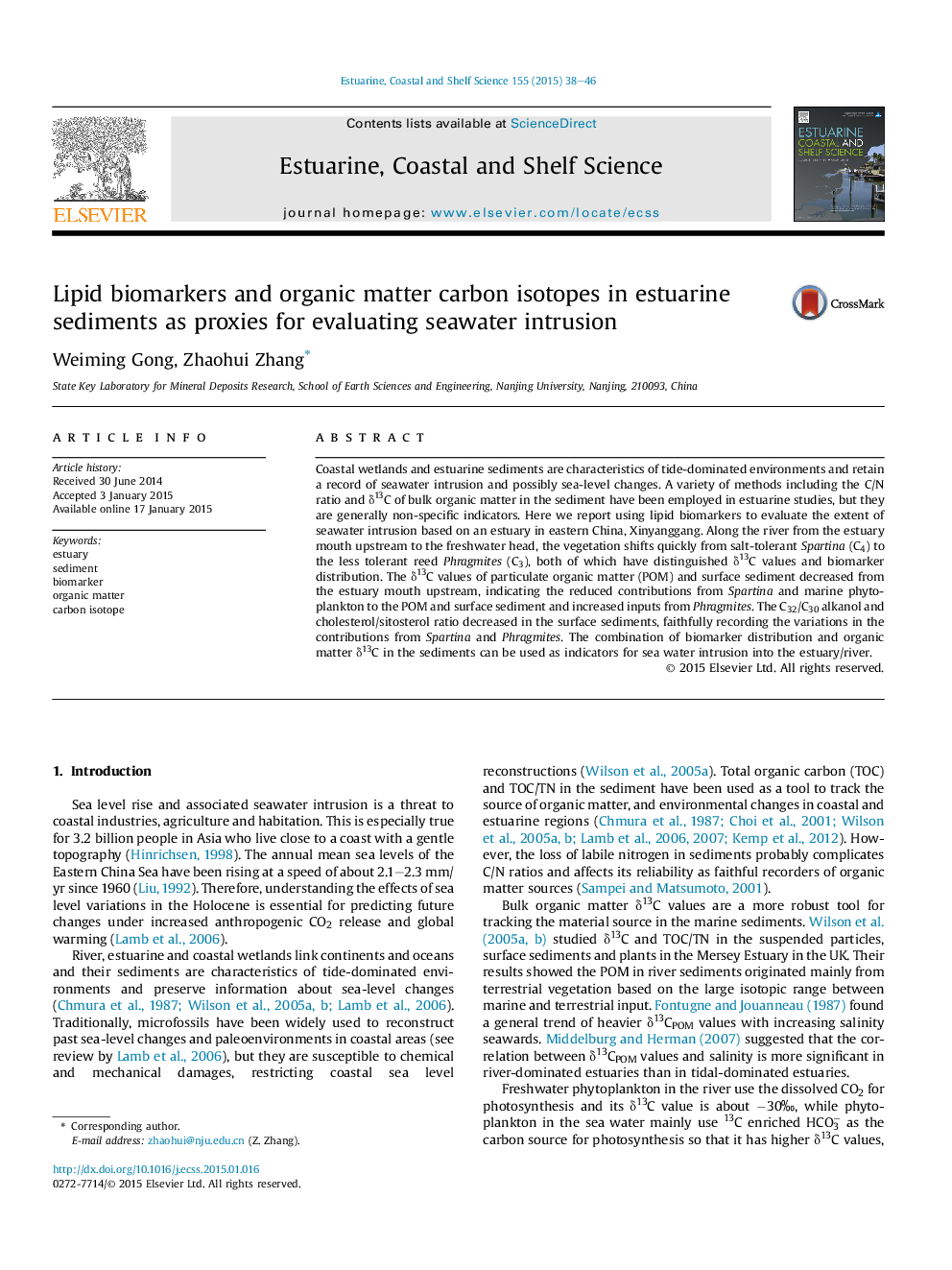| Article ID | Journal | Published Year | Pages | File Type |
|---|---|---|---|---|
| 4539611 | Estuarine, Coastal and Shelf Science | 2015 | 9 Pages |
Coastal wetlands and estuarine sediments are characteristics of tide-dominated environments and retain a record of seawater intrusion and possibly sea-level changes. A variety of methods including the C/N ratio and δ13C of bulk organic matter in the sediment have been employed in estuarine studies, but they are generally non-specific indicators. Here we report using lipid biomarkers to evaluate the extent of seawater intrusion based on an estuary in eastern China, Xinyanggang. Along the river from the estuary mouth upstream to the freshwater head, the vegetation shifts quickly from salt-tolerant Spartina (C4) to the less tolerant reed Phragmites (C3), both of which have distinguished δ13C values and biomarker distribution. The δ13C values of particulate organic matter (POM) and surface sediment decreased from the estuary mouth upstream, indicating the reduced contributions from Spartina and marine phytoplankton to the POM and surface sediment and increased inputs from Phragmites. The C32/C30 alkanol and cholesterol/sitosterol ratio decreased in the surface sediments, faithfully recording the variations in the contributions from Spartina and Phragmites. The combination of biomarker distribution and organic matter δ13C in the sediments can be used as indicators for sea water intrusion into the estuary/river.
